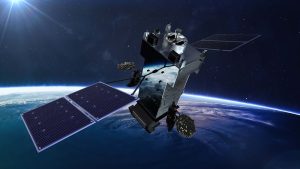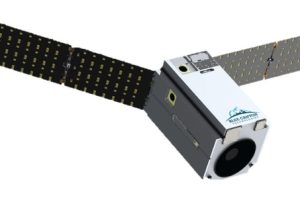It is described as a major milestone in the U.S. Next-Generation Overhead Persistent Infrared (Next-Gen OPIR) Missile Warning Program, which will improve the country’s strategic warning capabilities and its ability to track incoming missiles.
The payload, known as NGG-1 (Next Generation Geosynchronous), was transported across California from Raytheon’s Mission Payload Facility in El Segundo to Lockheed Martin’s Space Vehicle Integration Facility in Sunnyvale. This followed the successful completion of thermal vacuum chamber testing from April to August, 2024.
At Lockheed, the payload will be integrated with the satellite bus and undergo further system testing, to ensure the satellite can operate in extreme vacuum and temperature conditions.
NGG-1
NGG-1 is scheduled to launch December 2025.
As mentioned, NGG-1 is the first of two payloads in development for geosynchronous Earth orbit. But the Next-Generation Overhead Persistent Infrared Missile Warning Program also includes development of OPIR sensors for highly elliptical orbit, known as Next-Generation Polar (NGP).
Both NGG and NGP are designed to deliver improved strategic warning capabilities that are more survivable against emerging threats, says the SSC. The programme is managed by the command’s Space Sensing Strategic Missile Warning Acquisition Delta.
“Next-Gen OPIR capabilities will ensure we maintain an asymmetric advantage against adversarial threats,” said Captain Christian Pung, section chief, Mission Payloads, SSC NGG Program.
“Our advancements in early warning capabilities strengthen our ability to track incoming missiles and deter their potential effects throughout all phases of a conflict. I look forward to our team of military, civilian, Federally Funded Research and Development Center, and industry partners continuing to work together to keep ahead of threats and future conflicts in space.”
Next-Gen OPIR
The US Space Force selected Northrop Grumman, in June 2020, to provide the first two United States Space Force (USSF) polar orbiting space vehicles, the next-gen missile warning satellites.
The contract, awarded by the USSF was worth up to $2.37 billion – for design and development work in Phase 1 of the Next-Generation OPIR Polar programme.
Lockheed Martin Space, in January 2021, was awarded a $4.934bn contract for the manufacturing, assembly, integration, test and delivery of the Earth orbiting space vehicle.
Image: Lockheed Martin
See also: Space Force awards space laser comms terminal contracts
 Electronics Weekly Electronics Design & Components Tech News
Electronics Weekly Electronics Design & Components Tech News




